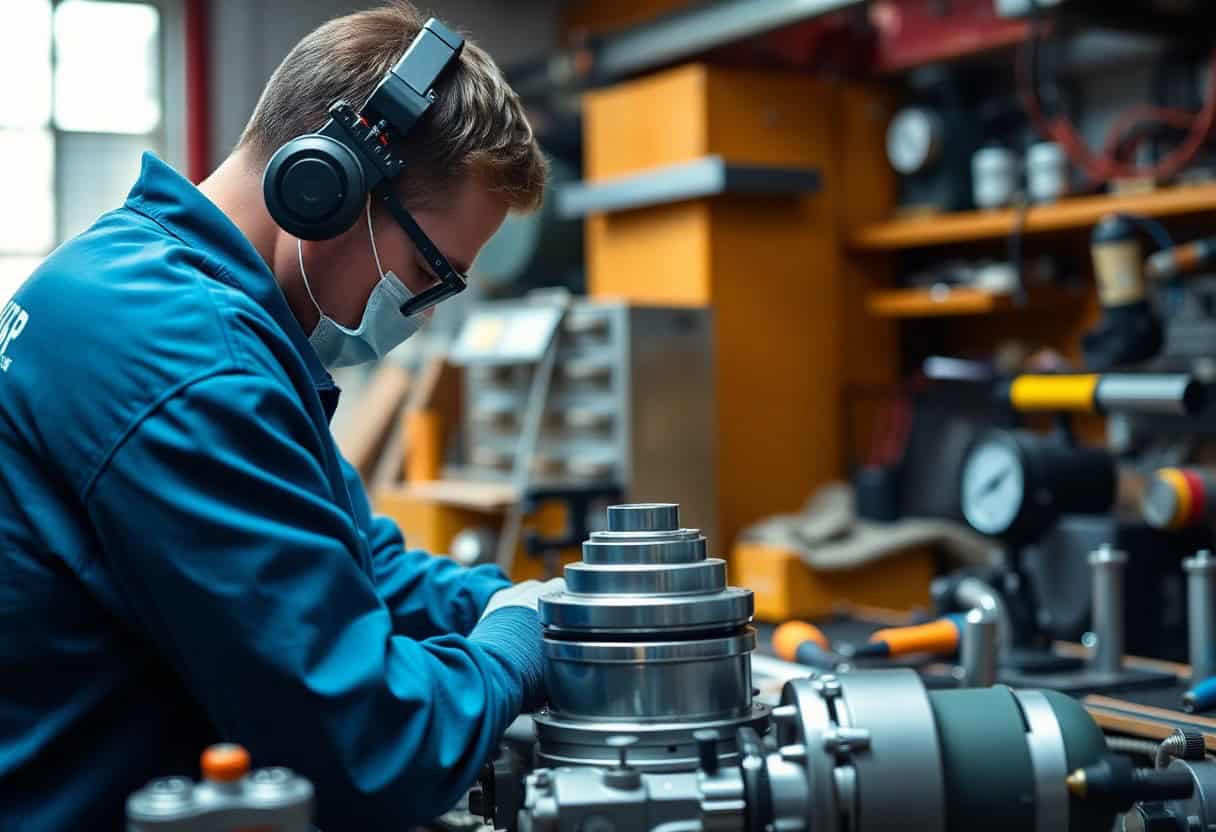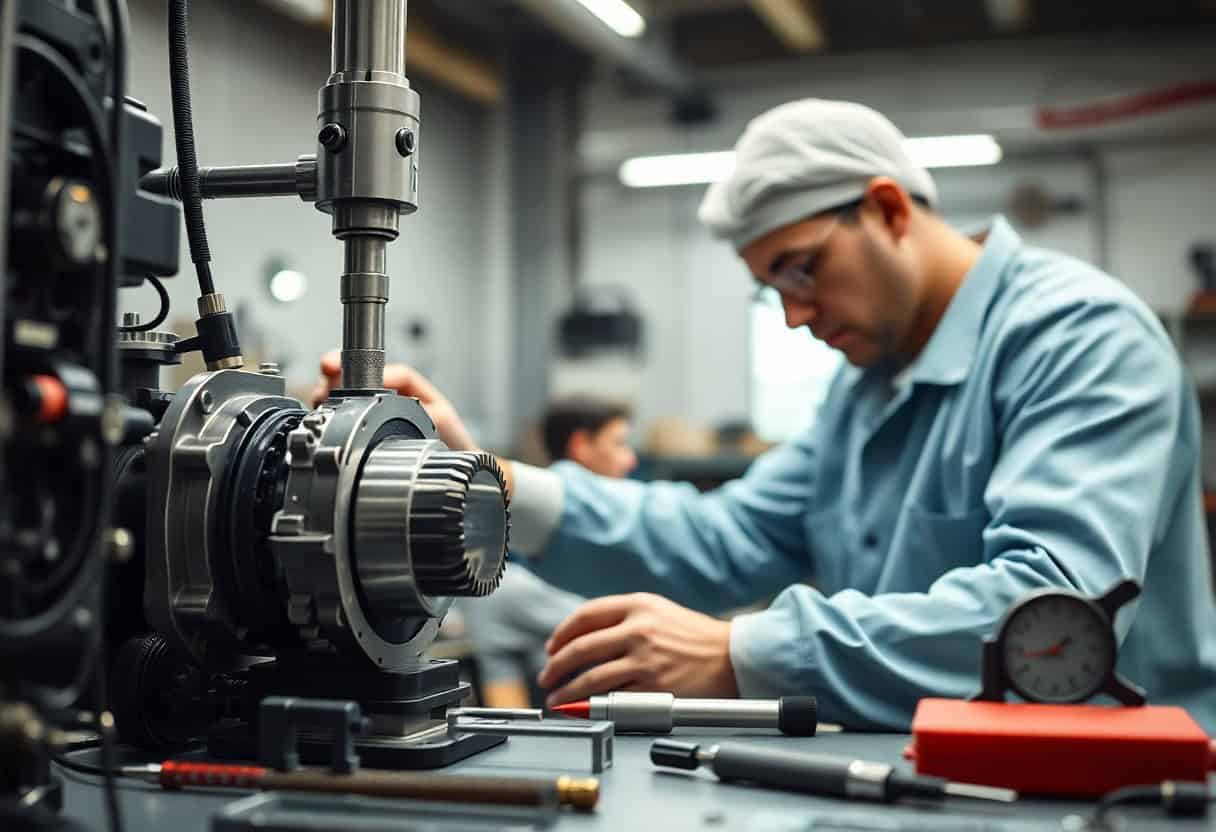Precision in installation is key to ensuring optimal performance and enhancing the durability of your systems. Achieving perfect alignment not only fosters smooth operation but also guarantees air-tightness, which is imperative in preventing leakage and maintaining energy efficiency. By adopting advanced techniques and using reliable tools, such as those detailed in Total Station Alignment: Mastering Laser Precision, you can significantly improve the integrity of your installations. Here, we’ll explore how you can enhance your installation processes for a more efficient and effective outcome.

Importance of Precision Installation
For ensuring optimal functioning of machinery, precision installation is key. Without it, you may face issues such as excessive wear, increased energy consumption, and potentially costly downtime. You can explore more insights in THE ALIGNMENT FIELD GUIDE, which highlights the significance of accurate alignment in various systems.
Benefits of Accurate Alignment
Along with minimizing wear and tear, accurate alignment can significantly enhance system longevity and efficiency. When components are correctly aligned, you reduce the risk of breakdowns and prolong the life of your equipment, ultimately saving money on repairs and replacements.
Impact on System Performance
Any misalignment can lead to substantial performance issues, resulting in inefficient operation. When machinery is not properly aligned, you may experience vibrations, increased heat generation, and potential mechanical failures.
Hence, maintaining precision in alignment contributes to your system’s overall efficiency. Without it, you may encounter reduced productivity and increased operational costs. An improperly aligned system can cause excessive vibrations that may lead to premature component failure. Furthermore, incorrect alignment can cause energy inefficiencies, meaning your equipment consumes more power. In the long run, investing time in precise installation not only safeguards your machinery but also enhances performance and saves your budget.
Tools and Techniques for Achieving Precision
Clearly, utilising the right tools and techniques is vital for achieving perfect alignment during installation. Precision not only guarantees smooth operation but also ensures air-tightness, which is vital in many applications. Investing time in selecting appropriate instruments can significantly enhance your installation’s accuracy and overall effectiveness.
Essential Tools for Installation
To begin with, having the right tools at your disposal can make all the difference. Key instruments include a laser level, calipers, and a plumb bob. These tools help you assess alignment and measurements with utmost precision, minimising the likelihood of errors that could lead to costly adjustments later.
Techniques for Ensuring Accurate Measurements
Measurements must be taken with care to ensure precision. Techniques such as double-checking measurements and using a consistent reference point can greatly reduce discrepancies. Additionally, employing a calibrator can help verify tool accuracy, which is especially vital when working with sensitive components.
At the heart of accurate measurements is the practice of systematic checking. This involves taking multiple readings and averaging them for consistency. Ensure that tools are calibrated regularly to avoid misalignment due to wear and tear. Always maintain a steady hand when measuring and consider stabilising your instruments to eliminate human error. By implementing these techniques, you significantly enhance the integrity of your installation, leading to optimal performance and safety.
Common Challenges in Installation
Some of the most common challenges you may face during installation include misalignment, inadequate sealing, and surface irregularities. These issues can lead to inefficient operation and decreased longevity of your equipment. Understanding and addressing these problems early on is vital for achieving optimal results. For further insights, visit the Alignment Archives – Ludeca.
Identifying Alignment Issues
After you have completed your initial setup, it is imperative to determine if any alignment issues persist. By carefully evaluating alignment using proper tools and techniques, you can prevent future complications that may affect performance and safety. Regular inspections will enable you to detect misalignments before they escalate into significant problems.
Solutions to Overcome Installation Challenges
After identifying the challenges you may encounter, implementing effective solutions is paramount for smooth operation. Utilising sophisticated alignment tools can help correct misalignments, while ensuring that all components are installed correctly contributes to maintaining air-tightness.
For instance, ensuring that you use the correct alignment tools can significantly reduce the likelihood of future complications. In addition, adopting a methodical installation process, including regular checking and recalibrating, can enhance the overall performance of your systems. It is equally important to seal connections well, as this prevents air leaks and improves your system’s efficiency. Without these measures, you risk inefficient operation, which could lead to long-term damage and safety hazards. Therefore, addressing installation challenges from the outset is imperative for optimal functionality.
Steps for Perfect Alignment
Many factors contribute to achieving perfect alignment during installation. Begin with a thorough assessment of the components involved, ensuring each part is compatible and precisely positioned. Address any inconsistencies in the surfaces, and employ measuring tools for accuracy. Continuous checks throughout the process will help maintain alignment, ultimately leading to enhanced functionality and air-tightness.
Pre-Installation Preparation
Behind every successful installation lies meticulous pre-installation preparation. Begin by gathering all necessary tools and materials, and ensure the installation site is clean and well-organised. Assess the requirements for alignment, and plan your approach, as this lays the foundation for a smooth installation process.
Best Practices During Installation
Practices during installation can significantly impact the final outcome. Employ consistent techniques, continuously monitor your alignment, and use level indicators and measuring tapes to ensure precision. Tighten fasteners in a uniform manner, preventing any undue stress or misalignment.
Preparation is key to successful installation practices. Ensure that you maintain a steady hand and a careful eye throughout the task. Utilise a combination square and spirit level to verify your alignment regularly. Should you encounter resistance when adjusting components, avoid forcing them into place, as this can lead to damage or misalignment. Take the time to make necessary adjustments, ensuring each part fits perfectly together for smooth operation and air-tightness.

Ensuring Air-Tightness
Unlike other aspects of installation, achieving air-tightness is vital for enhancing energy efficiency and preventing moisture intrusion. Any gaps or leaks can lead to significant energy loss, increased costs, and compromised indoor comfort levels. Taking meticulous care during the installation process is vital to ensure a properly sealed environment that functions effectively over time.
Importance of Sealing
Behind every effective air-tight structure lies a robust sealing strategy. Proper sealing not only keeps unwanted air and moisture at bay but also ensures optimal performance of your heating and cooling systems. This means a more comfortable living space and savings on energy bills, making it a necessary investment for any installation project.
Methods for Testing Air-Tightness
Before finalising your installation, testing for air-tightness is paramount. Utilising methods such as blower door tests, smoke testing, and infrared thermography will help identify any leaks or deficiencies. These assessments provide invaluable insights, enabling you to make necessary adjustments to achieve the best possible air-tight results.
In addition to the aforementioned methods, employing blower door tests allows for quantifiable analysis of air flow in your installation. Using a calibrated fan, this method creates a pressure difference, helping to pinpoint leaks effectively. Smoke testing, on the other hand, visually indicates air movement and leak points throughout the structure. Lastly, infrared thermography detects thermal discrepancies, revealing hidden weaknesses in your installation. By combining these techniques, you can ensure that your installation is not only air-tight but also energy-efficient, leading to significant long-term benefits.
Case Studies in Precision Installation
All professionals engaged in the installation of air-tight systems can benefit from a thorough examination of relevant case studies. These highlight both effective practices and areas for improvement, yielding insights into the process of achieving precision installation. Consider the following examples:
- Case Study 1: Installation of triple-glazed windows in a commercial building led to a 25% reduction in energy costs.
- Case Study 2: Initial misalignment of HVAC systems resulted in a 30% increase in energy usage before correcting the alignment.
- Case Study 3: Implementing precise seals improved indoor air quality scores by 40%.
- Case Study 4: A thorough inspection programme identified faulty installations, saving the company £50,000 in potential retrofitting costs.
Successful Installations
Along this journey of precision installation, numerous examples serve as benchmarks for excellence. When installations are executed with an acute focus on alignment and air-tightness, the benefits are palpable, from reduced energy costs to improved customer satisfaction.
Lessons Learned from Past Mistakes
The path to achieving impeccable installations is often paved with lessons derived from prior errors. Regularly reflecting on these mistakes can profoundly influence your preparation and execution.
In fact, many professionals have encountered significant challenges due to incorrect alignment that compromised performance. For instance, poorly fitted components can lead to disruptions that not only affect efficiency but also pose potential health risks due to air quality issues. By analysing these past experiences, you can adopt best practices that ensure a fortified approach for future installations, thus transforming initial setbacks into valuable teaching moments.
Final Words
Taking this into account, achieving precision installation is vital for ensuring perfect alignment, which ultimately leads to smooth operation and air-tightness. By focusing on the intricacies of the installation process, you can significantly enhance the performance and longevity of your system. Investing time and effort in precise alignment will not only improve functionality but also contribute to energy efficiency and overall satisfaction. Ensure every step is followed meticulously to achieve the best results in your installations.
FAQ
Q: What is precision installation and why is it important?
A: Precision installation refers to the methodical process of placing components or systems in exact alignment to ensure optimal performance. It is important because correct alignment enhances the functionality of mechanical systems, reduces wear and tear, and ensures air-tightness, which is imperative for maintaining energy efficiency and preventing leaks.
Q: How does achieving perfect alignment contribute to smoother operation?
A: Achieving perfect alignment minimises friction and resistance during operation. When components are aligned correctly, they can move smoothly without unnecessary strain on the system. This not only leads to quieter operation but also extends the lifespan of the equipment and reduces maintenance costs.
Q: What methods are used to ensure air-tightness during installation?
A: To ensure air-tightness, installers often use sealing techniques such as gaskets, caulking, and adhesives. Additionally, tools such as smoke tests or pressure gauges may be employed to detect leaks after installation. Proper alignment also plays a vital role in ensuring that seals fit correctly and function effectively.
Q: Can improper installation lead to operational issues?
A: Yes, improper installation can lead to a variety of operational issues such as increased wear and failure of components, energy inefficiency due to air leaks, and ultimately, reduced performance of the system. It is imperative to adhere to precision installation practices to mitigate these risks.
Q: What role does professional expertise play in ensuring precision installation?
A: Professional expertise is invaluable in ensuring precision installation, as experienced technicians possess the knowledge and skills to assess system requirements, apply appropriate techniques, and utilise the right tools. Their training allows them to spot potential alignment issues that an untrained eye may overlook, thus ensuring a successful installation that meets operational standards.









